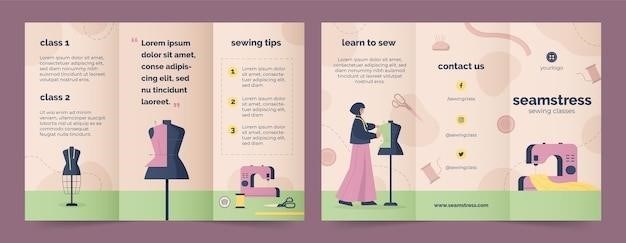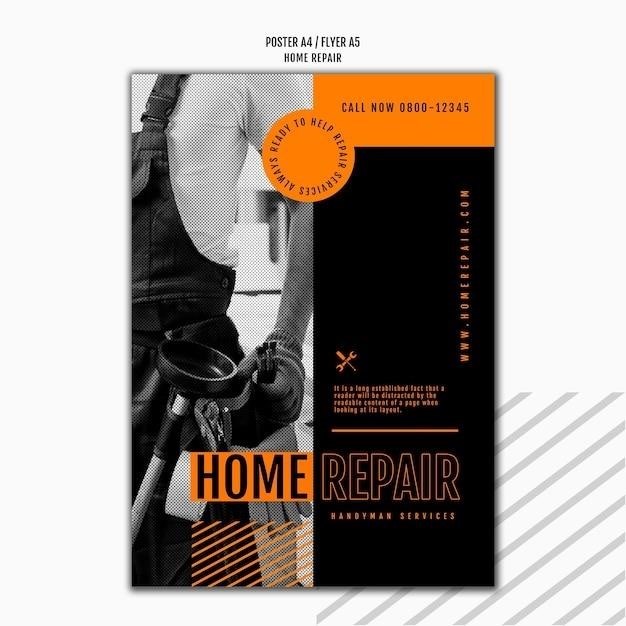
This comprehensive manual provides a detailed guide to using your New Home sewing machine. It covers everything from getting started and basic sewing techniques to advanced sewing techniques, troubleshooting, maintenance, and safety precautions. You’ll find detailed instructions, helpful diagrams, and troubleshooting tips to make your sewing experience enjoyable and successful.
Introduction
Welcome to the world of sewing with your New Home sewing machine! This manual is your comprehensive guide to unlocking the full potential of your machine, helping you create beautiful and functional garments, home décor, and crafts.
New Home has a rich history in the sewing industry, dating back to 1860 when the company was founded in Orange, Massachusetts. Their machines have become a household name, trusted by generations of sewers for their quality and reliability. Now, with Janome’s expertise, New Home continues to provide innovative and user-friendly sewing machines for every skill level.
This manual is designed to be your companion throughout your sewing journey. Whether you are a beginner eager to learn the basics or an experienced sewer looking to explore new techniques, you will find the information you need to confidently operate your New Home sewing machine.
Take your time to read through this manual carefully. Familiarize yourself with the different parts of your machine, understand its capabilities, and learn the essential safety precautions. With practice and a little patience, you’ll be creating stunning projects in no time.

Getting Started
Before you embark on your first sewing project, it’s essential to familiarize yourself with your New Home sewing machine and its features. This section will guide you through the initial setup and provide you with the fundamental knowledge to operate your machine effectively.
Unpacking and Assembly⁚ Carefully unpack your sewing machine and identify all the components. Refer to the packaging or the machine’s manual for specific instructions on assembly. Typically, this involves attaching the foot pedal, connecting the power cord, and ensuring all parts are securely fastened.
Thread the Machine⁚ Threading your sewing machine correctly is crucial for smooth sewing. Consult the manual for detailed instructions on threading the upper thread through the various guides and tension discs. Ensure the bobbin is correctly wound and inserted into the bobbin case.
Select the Needle⁚ Choose the appropriate needle size and type for your fabric and project. The manual will provide guidance on needle selection. Remember to insert the needle correctly, ensuring it is securely tightened.
Adjust the Tension⁚ Proper tension is vital for consistent stitching. The tension settings on your machine may require some experimentation. The manual provides instructions on adjusting the tension based on your fabric and thread type.
Practice with Fabric Scraps⁚ Before tackling your main project, it’s a good idea to practice on fabric scraps to familiarize yourself with the machine’s functions, stitch settings, and speed control.
Basic Sewing Techniques
Mastering basic sewing techniques is essential for any sewing enthusiast. These techniques form the foundation for more complex projects and allow you to create a wide range of garments and crafts.
Straight Stitching⁚ Straight stitching is the most fundamental technique. It involves sewing a straight line along the fabric, typically used for seams and hems. Practice straight stitching on scraps to get a feel for the machine’s speed and stitch length adjustments.
Backstitching⁚ Backstitching is used to secure the beginning and end of seams. It involves sewing a few stitches backward at the start and end of a straight stitch to prevent the thread from unraveling.
Zigzag Stitching⁚ Zigzag stitching is a versatile technique used for finishing edges, creating decorative effects, and attaching elastic. It involves a series of alternating stitches that create a zigzag pattern.
Buttonholes⁚ Buttonholes are essential for fastening garments and other projects. Your sewing machine may have an automatic buttonhole function, which simplifies the process. However, if your machine doesn’t have this feature, you can create buttonholes manually by following the instructions in your manual.
Sewing Curves⁚ Sewing curves can be challenging, but with practice, you can master this technique. Slow down your machine and use a gentle hand as you sew around curves to ensure smooth stitches.
These basic techniques are the building blocks for more complex sewing projects. With practice and patience, you’ll be able to confidently tackle a wide variety of sewing tasks.
Advanced Sewing Techniques
Once you’ve mastered the basics, you can delve into advanced sewing techniques to elevate your projects and expand your creative possibilities. These techniques require practice and precision, but the results are well worth the effort.
Free-Motion Quilting⁚ This technique involves using a darning foot to stitch freehand designs onto fabric. It’s a great way to add texture and artistry to quilts, pillows, and other projects. Practice on scraps before tackling a larger project.
Appliqué⁚ Appliqué involves attaching fabric shapes to a background fabric. It’s a versatile technique for creating decorative designs on garments, quilts, and home décor items. There are various appliqué methods, including hand-stitching, machine stitching, and fusible web techniques.
Embroidery⁚ Embroidery involves using a needle and thread to create decorative designs on fabric. Some sewing machines have built-in embroidery features, while others require an embroidery attachment. Explore different embroidery stitches and designs to personalize your projects.
Patchwork⁚ Patchwork involves sewing together fabric scraps to create a larger design. It’s a popular technique for quilts, but it can also be used for bags, pillows, and other accessories. Experiment with different fabrics and patterns to create unique designs.
Sashiko⁚ Sashiko is a traditional Japanese embroidery technique that involves stitching simple geometric patterns onto fabric. It’s a beautiful and meditative form of needlework that can be used to decorate garments, accessories, and home décor items.
With practice and exploration, you can master these advanced techniques and unleash your creativity in sewing.
Troubleshooting
While your New Home sewing machine is designed for reliable performance, occasional issues may arise. This section provides guidance on common problems and solutions to keep your machine running smoothly.
Needle Breaks⁚ If the needle breaks, immediately stop the machine and unplug it. Inspect the needle for any damage, and replace it with a new needle of the correct size and type for your fabric. Ensure the needle is properly inserted and tightened.
Thread Jams⁚ Thread jams can occur at various points in the machine. Carefully inspect the thread path, making sure there are no knots or tangles. Ensure the bobbin is properly wound and inserted. If the problem persists, consult your user manual for specific troubleshooting steps for your model.
Skipping Stitches⁚ Skipped stitches can be caused by a dull needle, incorrect needle size for the fabric, incorrect thread tension, or improper bobbin winding. Inspect and address these factors. You may also need to clean the feed dog mechanism.
Machine Won’t Start⁚ If the machine doesn’t power on, check the power cord and outlet for functionality. Ensure the on/off switch is in the on position. If the problem persists, contact a qualified repair technician.
Uneven Stitch Length⁚ If your stitch length is inconsistent, check the stitch length dial setting and ensure it’s correctly adjusted. Also, inspect the thread tension and make necessary adjustments.
Remember, safety is paramount. Always unplug the machine before attempting any repairs or cleaning. If you encounter persistent problems, it’s best to consult a qualified sewing machine technician for professional assistance.
Maintenance and Care
Regular maintenance ensures your New Home sewing machine operates smoothly and lasts for years to come. Follow these simple steps for optimal performance⁚
Regular Cleaning⁚ Dust and lint accumulation can hinder your machine’s performance. After each use, gently brush away any debris from the feed dog area, bobbin case, and around the needle plate. Use a small vacuum cleaner with a brush attachment for more thorough cleaning.
Oil Application⁚ Your machine’s moving parts require lubrication for smooth operation. Refer to your user manual for specific oiling points and the type of sewing machine oil to use. Apply a small drop of oil to each designated area, ensuring it doesn’t drip onto the fabric or sewing mechanisms.
Bobbin Case Cleaning⁚ The bobbin case needs regular cleaning to prevent thread jams and ensure proper bobbin winding. Gently remove the bobbin case and clean it with a soft brush or a lint-free cloth. Ensure all debris is removed, and re-insert the bobbin case.
Feed Dog Adjustment⁚ The feed dog mechanism helps move the fabric smoothly during sewing. If you notice uneven fabric feeding, adjust the feed dog height as needed. Consult your user manual for specific instructions on adjusting the feed dog for your machine model.
Storage⁚ When not in use, cover your sewing machine with a dust cover to protect it from dust and debris. Store it in a dry and clean environment.
By following these maintenance tips, you’ll extend the life of your New Home sewing machine and ensure it operates efficiently for years to come.
Accessories and Attachments
Your New Home sewing machine comes equipped with a variety of accessories and attachments designed to enhance your sewing experience and expand your creative possibilities. These tools allow you to tackle a wide range of projects, from basic repairs to intricate embroidery.
Standard Accessories⁚ Your machine likely includes essential accessories like needles, bobbins, a foot pedal, a power cord, a seam ripper, a needle threader, and a variety of presser feet. These are the foundation for your sewing adventures, providing the basic tools for various stitches and fabric types.
Optional Attachments⁚ New Home offers a range of optional attachments to enhance your sewing capabilities. These include⁚
- Zipper Foot⁚ This foot helps you sew zippers smoothly and accurately.
- Buttonhole Foot⁚ This specialized foot allows you to create professional-looking buttonholes.
- Free Motion Foot⁚ This foot allows for free-motion embroidery and quilting.
- Walking Foot⁚ This foot helps to evenly feed thick fabrics through the machine.
- Overcast Foot⁚ This foot creates a neat overcast stitch along the raw edges of fabric.
- Cording Foot⁚ This foot helps to sew cording or piping into fabric.
Explore the range of available accessories and attachments to find the ones that best suit your sewing needs. These tools can transform your sewing experience and unlock a world of creative possibilities.
Safety Precautions
Sewing machines, while valuable tools, require careful handling to ensure a safe and enjoyable experience. Always prioritize safety while using your New Home sewing machine by adhering to these important precautions⁚
- Never operate the sewing machine with a damaged cord or plug. A damaged cord or plug poses a serious electrical hazard. Replace any damaged components immediately.
- Keep fingers and hands away from the needle area when the machine is in operation. The needle moves at high speed and can cause severe injury.
- Do not use the sewing machine if it is not working properly. If you notice any malfunctions, immediately disconnect the machine from the power source and contact a qualified technician for repairs.
- Always unplug the sewing machine before cleaning or making any adjustments. Disconnecting the machine from the power source prevents electrical shock.
- Do not leave the sewing machine unattended while it is plugged in and operating. Always supervise the machine while it is in use.
- Keep the sewing machine away from water and other liquids. Avoid spills and moisture to prevent electrical hazards and damage to the machine.
- Never use the sewing machine for purposes other than those described in this manual. Using the machine for unintended purposes can be dangerous.
- Use only attachments and accessories recommended by the manufacturer. Using incompatible attachments or accessories can compromise safety and machine functionality.
- Store the sewing machine in a safe and dry place when not in use. Protect the machine from dust, moisture, and potential damage.
By following these safety precautions, you can ensure a safe and enjoyable sewing experience. Always exercise caution and common sense while using your New Home sewing machine.
Warranty Information
Your New Home sewing machine is backed by a comprehensive warranty that provides peace of mind and protection against defects. This warranty covers manufacturing defects in materials and workmanship for a specific period, typically one year from the date of purchase. The warranty details, including the duration of coverage and specific exclusions, are outlined in the warranty booklet that accompanies your sewing machine. To ensure your warranty remains valid, retain your original purchase receipt as proof of purchase.
In the event of a warranty claim, contact New Home customer service directly. They will guide you through the process and provide instructions for returning the machine for repair or replacement. It is important to note that the warranty does not cover damage caused by misuse, neglect, accidents, or unauthorized repairs.
For complete warranty information and details on how to contact New Home customer service, refer to the warranty booklet or visit the New Home website. Remember that proper care and maintenance of your sewing machine will help prolong its lifespan and minimize the need for warranty claims.


